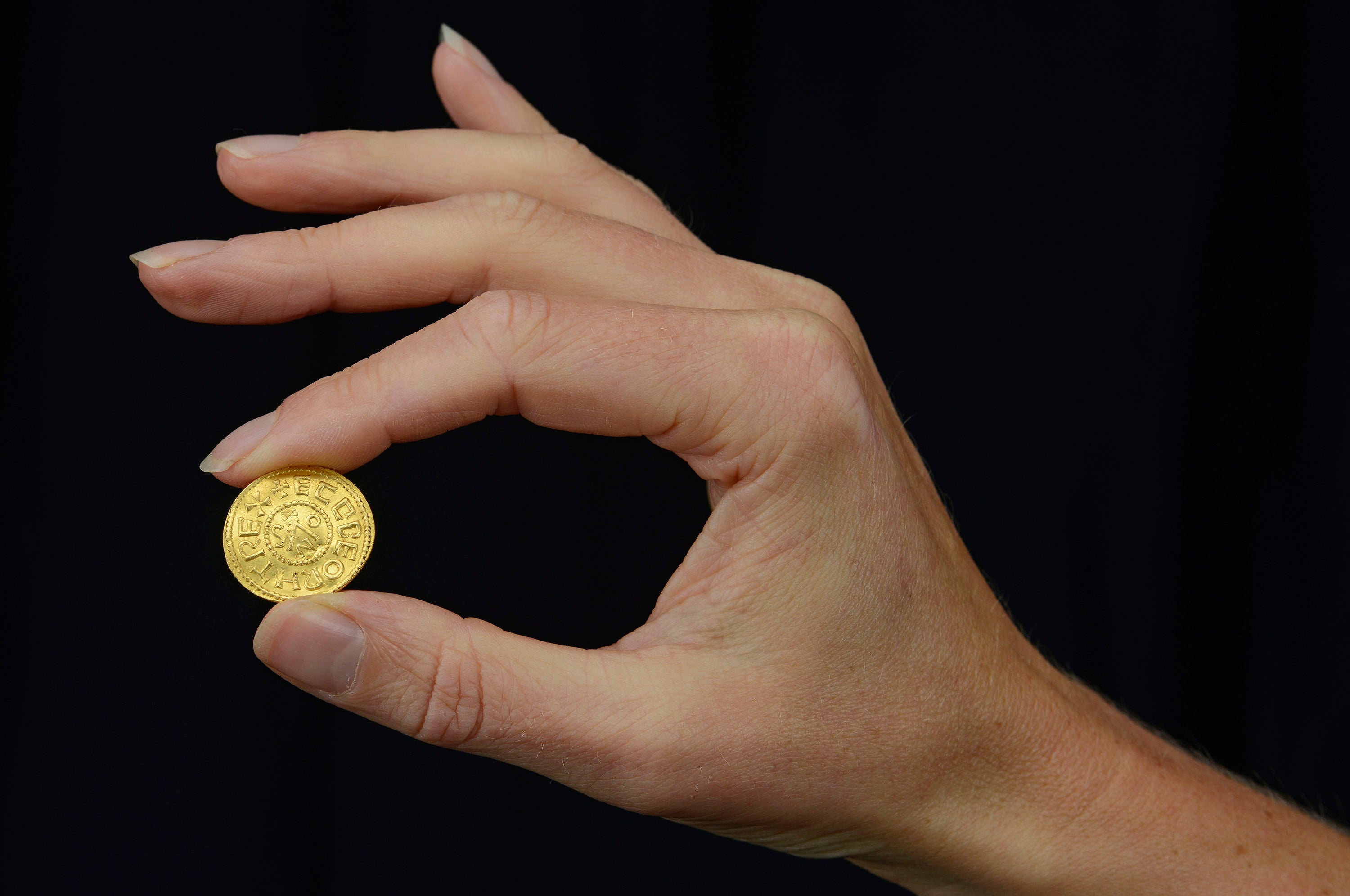Rare Anglo-Saxon gold coin found in Wiltshire valued at £200,000
Treasure likely to have come from West Saxon mint, possibly Southampton or Winchester

An extremely rare gold Anglo-Saxon coin has been discovered in a field in Wiltshire which experts say could fetch up to £200,000 at auction.
Weighing less than 5 grams, the Gold Penny, or Mancus of 30 Pence, was struck during the time of Ecgberht, King of the West Saxons between 802 and 839.
The coin, which was likely used for ceremonial or high-status payments, is likely to have come from a West Saxon mint, possibly Southampton or Winchester.
It was discovered by a metal detectorist in March 2020 and is said to be the only late Anglo-Saxon gold coin in private hands.
Eight other specimens are held by institutions, including seven at the British museum.
The coin is expected to fetch between £150,000 and £200,000 at auction on 8 September.
Peter Preston-Morley, head of the coin department at auctioneers Dix Noonan Webb, said: “It is very exciting to see this coin, gold coins of this monarch were completely unknown until this one was found.”
The coin contains high-purity gold as well as small levels of silver and copper.
“This composition is consistent with that of natural gold which has been neither refined nor artificially alloyed,” Mr Preston-Morley said.
“Gold of such purity is particularly malleable and easy to strike, but also more prone to wear and damage.
”None of the surface marks seem consistent with damage or alteration caused by attempts at mounting the coin for its use as a brooch or pendant.“
It is believed that orders for mancuses to be struck were only given on special occasions or religious events.
”This coin probably represents a mancus, a gold denomination that first appeared in central and northern Italy, but was current in England already before the year 800,“ Mr Preston-Morley said.
”Mancuses would have been extremely valuable coins.“
Mancus was a Anglo-Saxon unit of value equal to 30 silver pence and a single gold mancus would have bought the equivalent of 360 loaves of bread.
Experts said it was not possible to date the coin to a more specific period within the reign.
Subscribe to Independent Premium to bookmark this article
Want to bookmark your favourite articles and stories to read or reference later? Start your Independent Premium subscription today.

Join our commenting forum
Join thought-provoking conversations, follow other Independent readers and see their replies